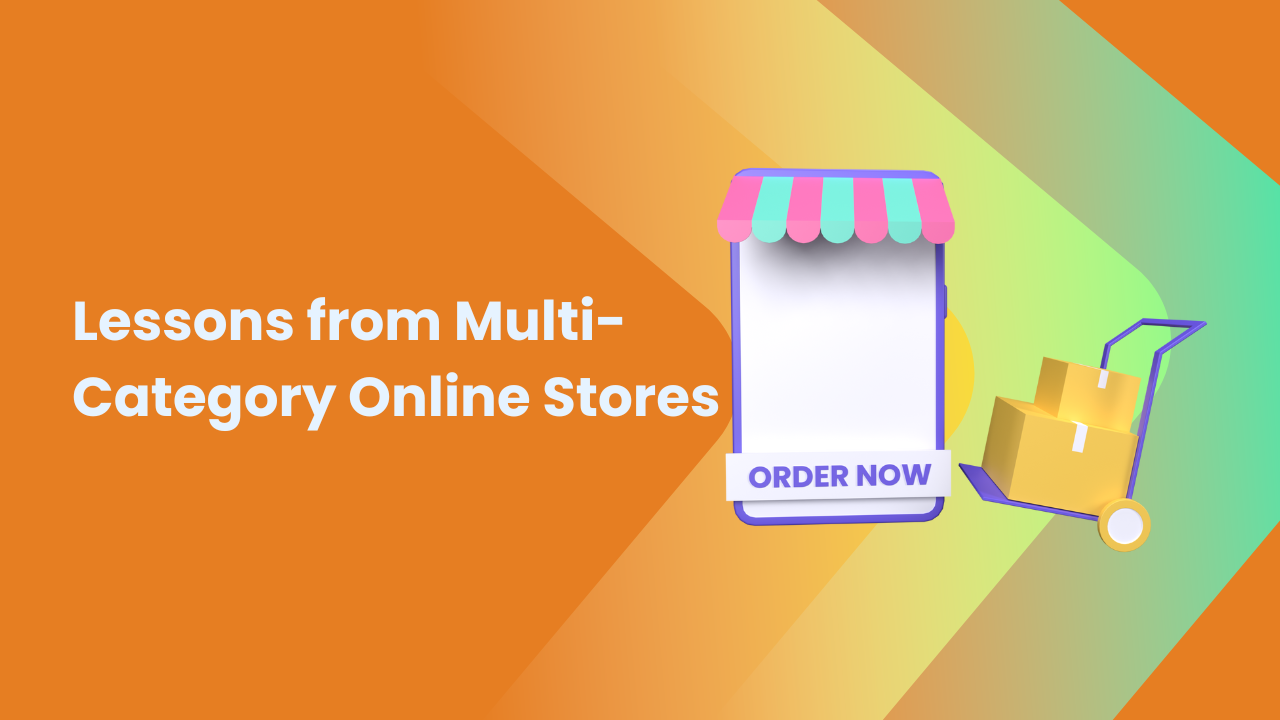Share this Article
In the evolving world of e-commerce, leveraging data is no longer optional for business owners—it's a necessity. For businesses in Nepal, where e-commerce is gaining significant traction, especially with increased internet access and smartphone penetration, understanding how to use data effectively can be the difference between success and failure. Data offers valuable insights into customer behavior, market trends, and operational efficiency, allowing you to make informed decisions and optimize various aspects of your business. By using data-driven strategies, you can improve performance, boost sales, enhance the customer experience, and ultimately position your store for long-term success.
In this article, we’ll explore the role of data in improving your e-commerce store’s performance, focusing on the key metrics you should track, how to interpret them, and actionable steps you can take to leverage these insights for growth. From understanding your customers better to refining your marketing efforts, data can empower you to make smarter decisions that lead to tangible business improvements.
The Power of Data in E-commerce: A Necessity in Nepal’s Growing Market
Nepal's e-commerce industry is expanding rapidly, with a greater number of Nepali consumers turning to online shopping platforms. The convenience of online shopping, improved access to the internet, and the availability of mobile payment options have significantly contributed to this growth. However, as competition intensifies, simply having a functional online store is no longer enough. Businesses in Nepal need to optimize their operations, understand their customers deeply, and deliver an exceptional online experience.
This is where data comes in.
Using data effectively allows e-commerce business owners to make strategic decisions that drive higher conversion rates, better customer engagement, improved product offerings, and greater overall profitability. Whether you are selling apparel, electronics, or groceries, understanding how data works and how it can inform your decisions is key to staying ahead in a competitive market like Nepal.
1. Collecting and Understanding Key E-commerce Metrics
The first step in using data to improve your e-commerce store’s performance is to identify and track the right key performance indicators (KPIs). These metrics are critical for measuring how well your business is performing and where improvements are needed. Here are some of the most important metrics every e-commerce store in Nepal should track:
Website Traffic
Website traffic is one of the fundamental metrics every e-commerce store should monitor. It reflects the number of visitors coming to your online store, which is an important indicator of how well your marketing and branding efforts are working. For businesses in Nepal, where digital marketing is still evolving, tracking traffic is essential to measure the success of campaigns, search engine optimization (SEO), and social media outreach.
However, it’s not just about the volume of traffic; you need to understand where your visitors are coming from, whether it’s through paid advertisements, organic search, social media, or direct links. This insight allows you to allocate your marketing budget more effectively, prioritizing the channels that bring in the most qualified traffic.
- Why is Website Traffic Important?
- Helps identify which marketing channels are most effective.
- Provides an understanding of audience interests and demographics.
- Allows businesses to gauge the impact of new marketing campaigns or promotions.
- Helps identify which marketing channels are most effective.
Conversion Rate
Conversion rate is the percentage of visitors to your site who complete a desired action, such as making a purchase, signing up for a newsletter, or downloading a resource. In Nepal, where consumers may still be cautious about online shopping, improving your conversion rate can help you maximize the value of the traffic you are already receiving.
If you notice that many people are visiting your site but not making purchases, it could indicate problems with your product pages, checkout process, or trust signals. A well-optimized site can significantly boost conversion rates.
- Why Track Conversion Rate?
- A higher conversion rate means better utilization of your site’s traffic.
- Helps identify pain points in the customer journey.
- Optimizing conversion rates leads to higher sales with the same amount of traffic.
- A higher conversion rate means better utilization of your site’s traffic.
Average Order Value (AOV)
Average Order Value (AOV) refers to the average amount a customer spends on each transaction. In Nepal, where consumers are price-sensitive, understanding your AOV can provide valuable insights into your pricing strategies, product bundling, and promotions. A higher AOV indicates that your customers are spending more during each visit, which can significantly boost your revenue without requiring you to acquire more customers.
To increase your AOV, consider implementing upselling strategies, such as suggesting related products or offering discounts on bulk purchases. By increasing AOV, you can grow your revenue more efficiently.
- Why Track AOV?
- Helps maximize revenue by encouraging customers to spend more per transaction.
- Assists in developing promotional strategies like cross-selling or product bundles.
- Allows you to analyze the effectiveness of pricing strategies.
- Helps maximize revenue by encouraging customers to spend more per transaction.
Customer Acquisition Cost (CAC)
Customer Acquisition Cost (CAC) refers to the cost incurred in acquiring a new customer, including the expenses of marketing, sales, and advertising. This metric is particularly relevant for businesses in Nepal, where digital marketing expenses are increasing. By calculating your CAC, you can assess whether your marketing efforts are efficient and whether you’re spending too much to attract new customers.
A high CAC compared to your Customer Lifetime Value (CLV) can indicate that your business is not yet profitable, and changes may be needed in your marketing strategies.
- Why Track CAC?
- Helps assess the efficiency of your marketing campaigns.
- Ensures that you are spending your marketing budget wisely.
- Aids in understanding how long it will take to recover the costs of acquiring a new customer.
- Helps assess the efficiency of your marketing campaigns.
Customer Lifetime Value (CLV)
Customer Lifetime Value (CLV) represents the total revenue a customer will generate for your business over the course of their relationship with you. In Nepal, where customer loyalty is highly valued, increasing CLV can help businesses maximize their profitability over the long term. Loyal customers not only contribute repeated sales but are also more likely to refer others to your business.
By analyzing CLV, businesses can optimize customer retention strategies, such as loyalty programs or personalized marketing.
- Why Track CLV?
- Helps measure long-term business sustainability.
- Indicates the effectiveness of retention strategies and customer loyalty efforts.
- Aids in determining how much can be spent on acquiring new customers.
- Helps measure long-term business sustainability.
Cart Abandonment Rate
Cart abandonment rate refers to the percentage of customers who add products to their cart but do not complete the purchase. This is a crucial metric for online stores in Nepal, where some customers may be hesitant about sharing their payment details or may face difficulties in the checkout process.
High cart abandonment rates can signal problems such as complicated navigation, unexpected shipping costs, or lack of trust in the payment system. Reducing cart abandonment can be an effective way to boost sales.
- Why Track Cart Abandonment Rate?
- Helps identify obstacles in the checkout process.
- Signals customer hesitation or trust issues.
- Provides opportunities for retargeting abandoned carts through email reminders or special offers.
- Helps identify obstacles in the checkout process.
2. Using Data to Understand Customer Behavior
Understanding customer behavior is one of the most important aspects of using data to improve e-commerce performance. The more you know about how your customers browse and shop on your website, the better you can optimize their experience to drive conversions. Here are some ways to use customer behavior data to enhance your online store’s performance:
Tracking Page Views and Time on Site
Page views and the time customers spend on your site are key indicators of engagement. If users are browsing through multiple pages, it means they are interested in your products. If they are spending too little time, it could indicate that the site is difficult to navigate or that your content is not compelling enough.
Analyzing Bounce Rates
Bounce rate refers to the percentage of visitors who leave your website after viewing just one page. High bounce rates indicate that your website is not engaging enough to encourage visitors to explore more. In Nepal, where internet connection speeds can vary, a slow-loading page may also contribute to high bounce rates. Identifying high-bounce pages allows you to optimize those pages for better engagement.
Heatmaps and Click Tracking
Heatmaps visually represent where users are clicking on your site. This data can help you understand which parts of your website capture the most attention and which areas are ignored. For instance, if users are constantly clicking on a particular product but aren’t adding it to their cart, it may indicate a problem with the product’s price, description, or presentation.
3. Optimizing Marketing Efforts Using Data
In a competitive market like Nepal, marketing your e-commerce store effectively is crucial for attracting and retaining customers. By using data to track the performance of your marketing efforts, you can ensure that you are investing your resources wisely.
Ad Campaign Analysis
Paid advertising campaigns on platforms like Google Ads or Facebook can be a great way to drive traffic to your store. Analyzing metrics like click-through rates (CTR), conversion rates, and ROI allows you to assess whether your ads are resonating with your audience. If a particular ad is performing well, you can allocate more of your budget toward similar campaigns.
Social Media Performance
Social media platforms are essential for e-commerce stores in Nepal, as they are an effective way to reach local consumers. By analyzing metrics like likes, shares, comments, and clicks, you can gauge how well your content is performing. Social media analytics also show which platforms (e.g., Facebook, Instagram, TikTok) bring in the most traffic, helping you tailor your content to your audience.
4. Enhancing Customer Retention Using Data
Customer retention is just as important as customer acquisition. By analyzing data related to repeat purchases, customer satisfaction, and loyalty programs, you can build a loyal customer base.
Tracking Customer Satisfaction
Customer satisfaction metrics such as ratings and reviews provide direct feedback from customers base.
Tracking Customer Satisfaction
Customer satisfaction metrics such as ratings and reviews provide direct feedback from customers. Monitoring this data helps you identify areas where your store may be falling short, such as slow delivery times or product quality issues. Addressing these concerns promptly can improve customer retention and encourage repeat business.
Loyalty Programs and Discounts
Data on customer behavior can help you create targeted loyalty programs. By offering personalized discounts to repeat buyers, you can increase CLV and turn one-time customers into long-term supporters of your brand.
Conclusion
For Nepali e-commerce businesses, using data is not just about collecting numbers; it’s about turning that data into actionable insights that drive better business decisions. By tracking key metrics, analyzing customer behavior, optimizing marketing campaigns, and refining product offerings, you can significantly improve your store’s performance. The e-commerce landscape in Nepal is growing, and with the right data-driven strategies in place, your business can stand out in this competitive market, providing a better experience for customers while driving sustainable growth.
Categories:
E-commerce Tips & Tutorials
Tags:
DataDrivenNepal







